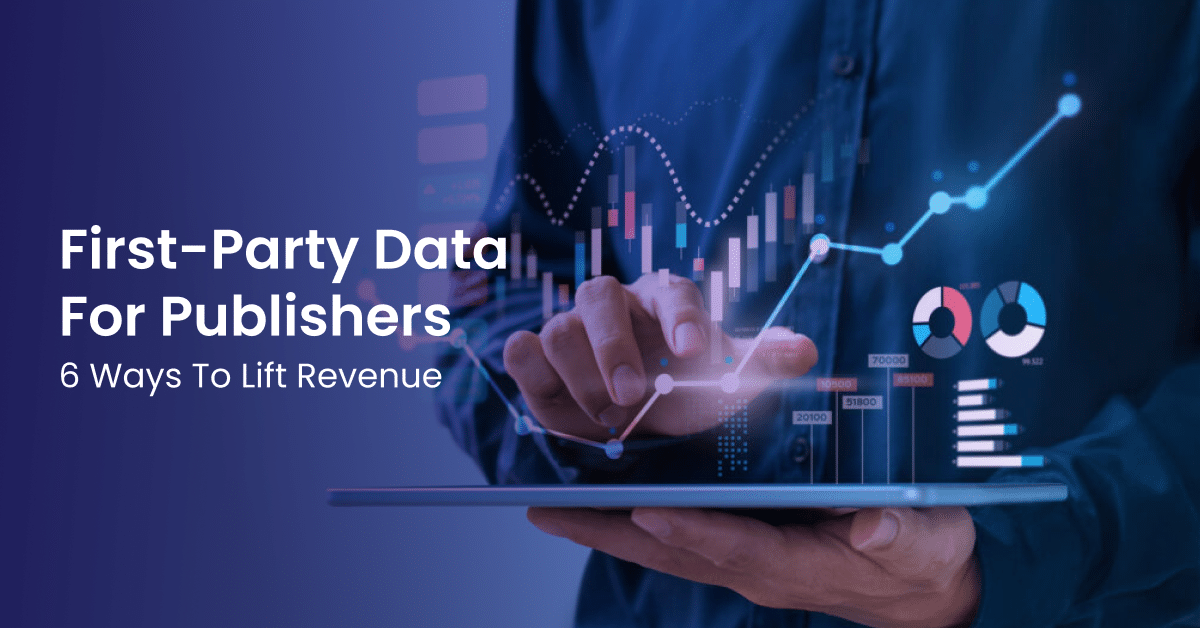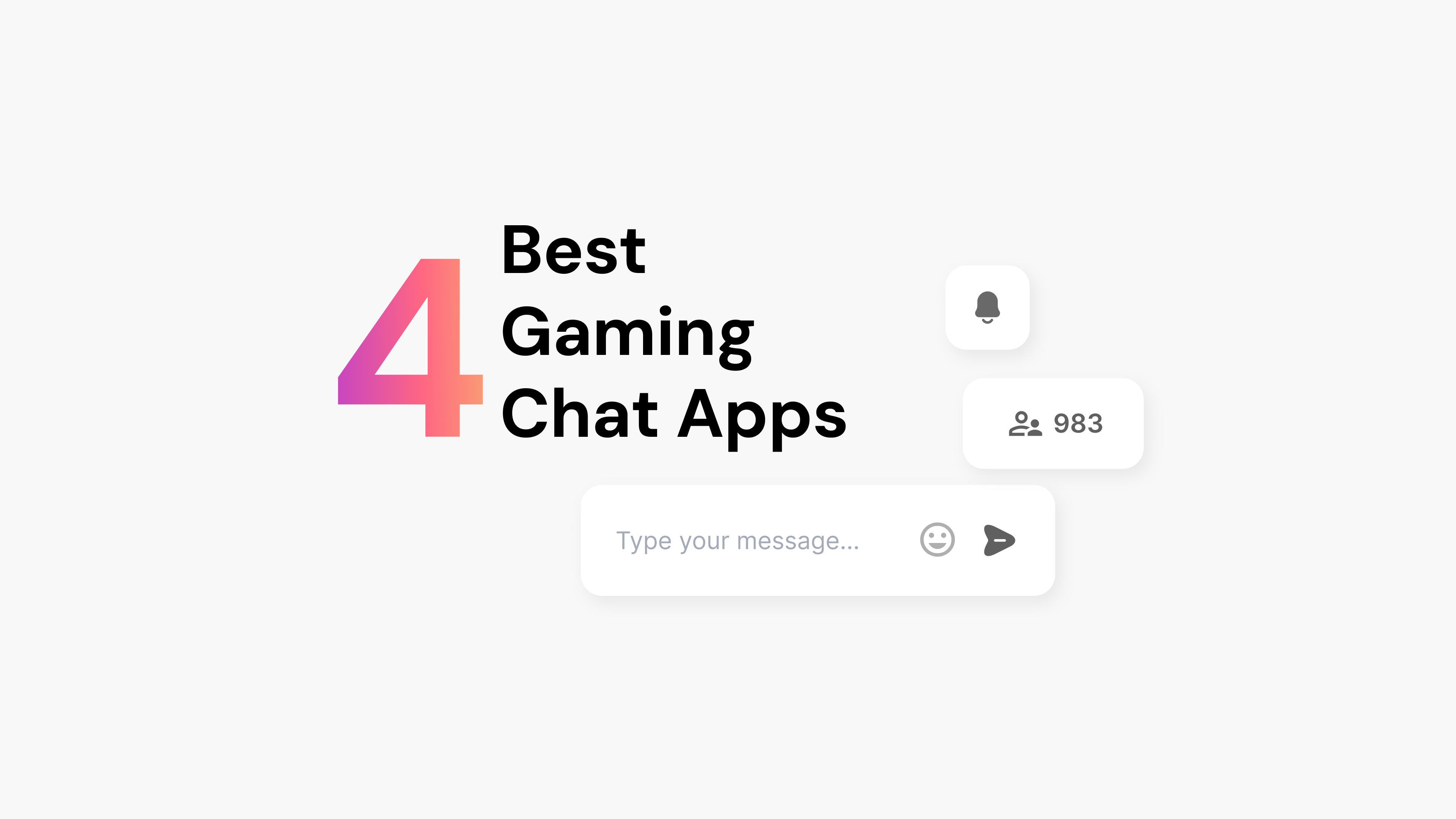

Publishers are under growing pressure to improve profitability and engagement. Social media platforms, streaming services, and other options compete for attention. There’s a way for publishers to win in the 2022s: invest in first-party data.

What Is First Party Data?
In simple terms, first-party data is information that a publisher directly obtains from a reader, subscriber, or member of an audience. The following first-party data examples show what this includes:
- Website Analytics. Many publishers are already collecting data points like clicks, page views, and time on site through their website analytics platform.
- Paid Subscriber Data. When a person buys a subscription to a publication, a publisher gains more data about them, including their location, news preferences, and media preferences.
- Email Engagement. Publishers that send out emails to their subscribers quietly gather data with every open and click.
- Event Participation. If a publisher offers live events (especially if the event has a digital component), you can gather first-party data from those events.
Publishers, especially those with paid subscriptions, have long collected data on their audience. So, why does first-party data matter today more than ever? The answer has to do with the death of third-party cookies.
The Death of Third Party Cookies: What It Means For Publishers
Apple and Google have decided to end support for third-party cookies in their web browsers. That’s critically important because these companies control most (approximately 80%) of the world’s web browser market. If web traffic is important for your publication, then take note of these changes.
Third-party cookies have fueled the growth of digital advertising for over a decade. This technology allows advertisers to track user behavior across multiple websites. That’s why consumers will see personalized ads for products they’ve viewed long after they close a product page.
Want the full story on cookieless future? See our post: The Future of Cookies In Marketing Strategy
When third-party cookies fade away, it will make life challenging for advertisers. Specifically, advertisers will have to change their standard processes. There’s another reason why advertisers are looking to make a change – growing problems in social media. Facebook, Twitter, and other social media platforms have been hit by multiple scandals, growing misinformation, and harmful content.
The changes create a perfect storm that creates a once-in-a-generation opportunity for publishers. Unlike other online properties, many publishers have strong commitments to quality content and curation. That matters because advertisers are hungry for brand-safe advertising opportunities.
While the growth opportunity is exciting, there’s a caveat: advertisers have high expectations.
They expect tremendous data to guide their decisions and effectively leverage programmatic advertising. Without significant first-party data on your audience, connecting with what publishers are looking for will be tough.
Benefits of First-Party Data for Publishers
First-party data isn’t just a buzzword—it’s a strategic asset. It enables publishers to transform content and advertising approaches, creating a more personalized and profitable experience.
Enhanced Audience Engagement
Craft content that resonates with audience interests, moving beyond generic articles to deliver targeted experiences.
Improved Ad Targeting
Offer advertisers precise targeting options based on audience preferences, increasing ad space value.
Increased Revenue Opportunities
Unlock new revenue streams through premium content subscriptions and personalized ad placements.
Compliance with Privacy Regulations
Maintain transparency and trust by collecting data directly from the audience, adhering to privacy laws.
6 Ways Publishers Can Lift Revenue With First-Party Data
Earning buy-in from management and colleagues to implement first-party data effectively is easy when you know the benefits. Fortunately collecting and using first-party data about your audience and subscribers unlocks new ways to increase revenue.

1. Drive Online Audience Growth
A publisher with a steadily growing, engaged audience can weather nearly any storm. First party data directly supports growing your audience, pageviews and engagement. For example, you’ll better understand which content and experiences your audience wants. Further, you can test and optimize word of mouth and sharing campaigns to grow your audience.
2. Lift Paid Subscription Growth Steadily
A growing number of publishers, large and small, are setting up paywalls or restricting parts of their content for paying customers only. Persuading more of your audience to purchase a subscription requires a detailed understanding of what customers value.
The secret to lifting subscriber revenue lies in getting granular and seeking unexpected patterns. For example, look at which content paid subscribers access when they first activate their paid account. Supplement this usage data with surveys to dive even deeper into what subscribers value.
To illustrate the impact of first-party data on growing paid subscribers, consider the following pitches to subscribers.
- Subscription Pitch Without First Party Data.
“Flash Sale. Sign up today for 50% off your annual subscription.”
- Subscription Pitch With First-Party Data.
“80% of staffers in Albany read our news coverage. Sign up today to keep up with what political insiders are readying.”
First-party data also helps you launch much more targeted appeals to different audience segments based on how they engage with your publication.
3. Improve Editorial Quality And Decisions
Publishers have endless opportunities to decide which stories to cover and how to cover them. Professional judgment and experience play an essential role in these editorial decisions.
What if you could supercharge your editor’s judgment with premium data?
That’s precisely what is possible when you leverage first-party data. Start with general types of data, like reviewing the content that attracts the most views and shares. First-party data analysis can take you a step further. You can also identify content engagement by segment (i.e., which content is valued by paying subscribers vs. anonymous website visitors).
With data as a guide, it is easier to update your publishing plans to keep your audience coming back for more. These editorial improvements will translate to more pageviews and higher engagement, key ways to make your publication more appealing to advertisers.
4. Increase Ecommerce Revenue
Selling subscriptions isn’t the only way for publishers to generate revenue. Media companies have offered merchandise (e.g., apparel, notebooks, books by your staff) for years. Digital products, like audio/video recordings and NFTs (non-fungible tokens), represent another opportunity to sell.
First-party data helps support Ecommerce growth in a couple ways:
- You can make better decisions about which products to create and promote by looking at audience behavior.
- Second, first-party data supports more effective segmentation and personalization when promoting products for sale.
5. Grow Loyalty With Events and Experiences.
Bringing your audience together through events and community experiences is a powerful way to deepen connections. Community experiences also create a moat around your publishing business that will be difficult for other companies to copy.
Community – the network of relationships formed around your content and events – is an important intangible asset. When your audience sees your publication as a community hub, they’re less likely to switch to alternatives. Over time, such increased loyalty translates to higher renewal rates and fewer cancellations.
6. Increase Value for Advertisers
Winning advertiser dollars for your publication is easier when you have robust first-party data. You can offer advertisers a wider variety of segmentation options based on how the audience engages with your content.
For example, an advertiser might want to appeal to new parents. With first-party data, you can filter your audience for people interacting with content related to families, fertility, and related topics. That segment is far more likely to convert for the advertiser compared to a more generic segment based on age and gender.
How Publishers Can Start Getting More First-Party Data Right Now
It’s clear that earning first-party data is valuable and can drive up revenue for publishers. Use the following tactics to get more first-party data.
1. Audit The First Party Data You Have
Most publishers already have some form of first-party data in their systems. The challenge is that this data tends to be scattered across multiple teams and apps. To assemble this data, start by looking at website analytics, mobile device analytics (e.g., mobile web and mobile apps if applicable), and email marketing analytics.
Once you have identified all of your first-party data resources, you can start to build a “single source of truth” for subscribers. This means organizing your data to track a subscriber’s activities across multiple devices, channels, and experiences.
2. Allocate Resources For First Party Campaigns & Testing
Accumulating first-party data is potential growth only. To gain the benefits of first-party data, committing to acting on it is vital. This could be as simple as setting a goal of creating at least two tests per month based on first-party data. Whether you start small or invest deeply in data,
3 Use Engagement Technology To Grow Website Engagement
Most publishers are already gathering website analytics and email data. While valuable, those sources of first-party data are more common. Therefore, it’s more difficult to build an advantage based on that data.
Adding Arena Live Chat and Live Blog to your website gives your audience new ways to engage. Instead of simply looking at pageviews, you can look at chat interactions and chat logs. As you offer more online community experiences that resonate with your audience, you’ll grow audience loyalty and get more data.
Discover How To Get More First-Party Data With Arena
The end of third-party cookies will change the world of online advertising and publishing. That change creates a new opportunity for publishers to grow their audiences and attract advertisers.
The essential ingredient is growing your online audience and continuously gathering first-party data. Find out more about Arena’s solutions for publishers.



